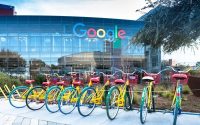For Digital Publishers, The “Pivot To Video” Bloodbath Is Here
If you think 2017 was bad for the media industry, just wait for this year’s bloodbath. Already, it’s promising to be another trash fire of a year–full of closings, layoffs, and panic (and notifications from your journalist friends that they’re now working in PR or marketing or advertising or consulting or as a barista).
Earlier this month, an article in Digiday raised plenty of eyebrows with an interview with an anonymous audience-development head who alluded to a near future where Facebook begins de-emphasizing video. For the last year, multiple publishers performed the “pivot to video”–devoting more resources to non-text posts on social platforms like Facebook, in the hopes that it would boost engagement and create the opportunity for more ad revenue. Facebook, at the time, encouraged publishers to focus on video. Now, according to the unnamed executive, Facebook is saying quite the opposite; “Facebook has encouraged us not to pivot to video, very candidly so,” the person said to Digiday, “The opportunities for monetization there are basically nil.”
This week that fear came to pass: The company announced it would prioritize posts in its Feed from friends and family, as opposed to public ones from pages and brands. “As we make these updates, Pages may see their reach, video watch time and referral traffic decrease,” Facebook wrote in its blog post.
For companies like Mashable and BuzzFeed, which have intensely recalibrated resources to cater to Facebook’s prior priority, this is scary news—such a digital media gold rush will not pan out.
And there’s more bad news. Other tech giants have begun to implement changes that will likely have serious consequences for video performance. Both Safari and Chrome are implementing changes that block autoplay videos with sound. Similarly, reports AdAge, Microsoft Edge will likely be doing the same.
For most people, this change should come as a relief. Those pesky autoplay ads are annoying and make pages load much slower. Yet, they are also an important unit to many publishers who rely on selling video ads. According to Perry Gold, an analyst at MoffettNathanson, while this will be a big change, the impact should be good in the long run. “I think the impact will be more of a pull vs. push video experience on many sites where users will gravitate toward higher-quality videos related to things they are actually interested in,” he writes in an email to Fast Company, “rather than having more click-baity type videos shoved in front of them.”
Gold adds that the Facebook change isn’t a complete video de-emphasis. He writes, “I don’t think it will necessarily be deemphasizing video in its feed but rather trying to emphasize higher quality video either coming from your friends and family or teasers for professionally produced episodic content that pushes users toward their Watch tab as Facebook’s tries to build a more YouTube-esque experience.”
And for Facebook, of course, it’s about more than just imitating YouTube. According to Brian Wieser, a senior analyst at PIVOTAL, Facebook’s original moves with publisher video and AMP didn’t produce the engagement results the company wanted. Facebook, obviously, wants people to stay on its platform, and yet recent platform tweaks haven’t caused more users to stay on it.
Meanwhile, Google is thriving. Another recent article from Digiday reports that Google’s Accelerated Mobile Pages (AMP), which was introduced as a competitor to Facebook’s Instant Articles, has outperformed its Facebook counterpart. AMP helped boost Google’s referrals–the company now accounts for 42% of publishers’ external traffic. Facebook, on the other hand, saw no referral growth. AMP is very likely to thank for Google’s growth, says Wieser; “One could infer, not unreasonably, that if AMP is doing well, then that has something to do with [Google’s overall growth].”
If Instant Articles hasn’t increased engagement, time spent, or even referral rates, then this week’s News Feed changes show how Facebook plans to fix that: by focusing on what it cares about, which does not include publishers. Wieser says Facebook’s current strategy is to help boost “high quality engagement.” If Instant Articles and more videos on the Feed don’t work, the company will do something else–even if that means going against media companies’ best interests. To state the obvious, Facebook’s allegiances aren’t to media companies. It was perhaps foolhardy for digital media strategies to contort to the whims of a platform that will likely change dramatically to keep people on its own platform.
With the News Feed changes going into effect, we’ll now begin to see the impact of these moves. While the tweaks may seem slight, digital media companies are going to feel the pain. And when the next pivot opportunity arises–because of some new program being introduced–will publishers throw their remaining cash in that direction and follow that lead too? Or will it be too late?
Fast Company , Read Full Story
(13)






